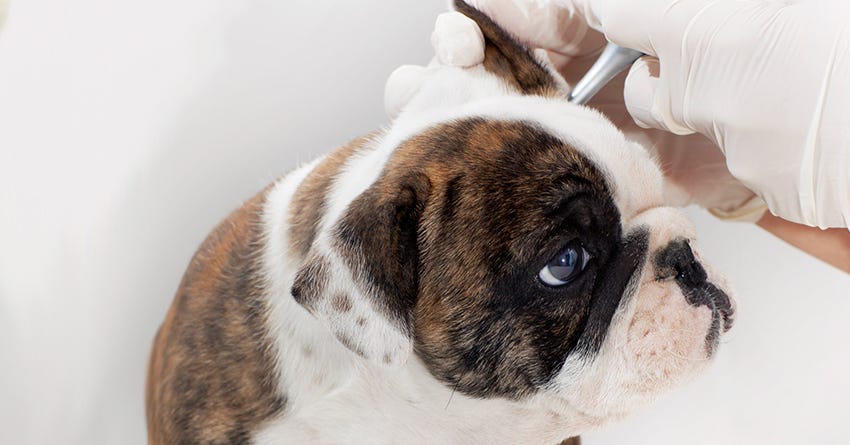Vet Tips to Recognize and Treat Pet Ear Problems

Is your dog or cat plagued by chronic ear problems?
Are frequent trips to the veterinary hospital for ear cleaning or applications of medications required to keep your dog’s ears free from uncomfortable inflammation and infection? If so, you are not alone, as ailments affecting the ears are some of the most common reasons owners present their pets to their veterinarian for evaluation and treatment. istock/alexandragl1
istock/alexandragl1Unique anatomy of the canine and feline ear
Dog and cat ears have multiple parts that can be affected by injury of illness, including: Pinna - Also known as the earflap, it's the fleshy piece of skin that either sticks up or folds over. Since the earflap is a structure that’s external to the body, it’s susceptible to injury from an animal bite, penetration by a plant awn (foxtail, cactus, etc.), or even self-trauma from a foot’s repeat scratching. The earflap is especially prone to a condition called hematoma, where blood accumulates between the pieces of cartilage providing structure to the flap. Hematoma makes the pinna uncomfortably swollen and often requires surgical repair. Ear canal- Our canine and feline companions have a different ear canal structure than people. Humans have a tunnel-like horizontal canal connecting the outside world to the tympanic membrane (eardrum). Dogs and cats have a vertical canal which opens at the base of the pinna and connects to a horizontal canal at an approximately 90° angle. This “L” shape permits fluid, environmental irritants, infectious organisms, and other materials to collect in the horizontal canal. The vertical to horizontal arrangement also makes it challenging for veterinarians to visualize the eardrum with an otoscope and difficult to remove discharge or other material taking up space in the horizontal canal.Causes of dog and cat ear problems
There are many causes capable of contributing to skin and ear problems including: Infection- A variety of microscopic organisms can take up residence in your pet’s ear, including bacteria, yeast, mites. Increased ear discharge is associated with all such causes, so cytology (microscopic examination) of the discharge is crucial in establishing a diagnosis so the most-appropriate treatment can be prescribed. Inflammation- As the ear canal is simply an extension of the skin into the skull, any irritants that affect the skin elsewhere on the body can also impact the ears. Hairs growing inside or broken hairs that fall into the ear canal or environmental materials (plant awns, dirt, dust, etc.) can also create inflammation. When the ear canal becomes inflamed an associated reduction in the canal’s diameter occurs, which makes it more difficult to perform an otoscopic examination and thoroughly cleanse or medicate the canal. Endocrine disorders- Hypothyroidism (under-functioning thyroid), hyperthyroidism (over-functioning thyroid), Cushing's disease (overproduction of steroids from the adrenal glands), and other endocrine (glandular) disorders negatively impact the immune system and therefore the health of the skin and ears. Mass like skin lesions and cancer- Polyps, viral papillomas, and benign and malignant tumors all take up space in the pinna or ear canal.Clinical signs of ear problems
Nearly all ear problems cause discomfort, which leads to the clinical signs your canine or feline companion can show:- Head shaking
- Scratching on or around the ear
- Discharge or bad smell coming from the ear
- Head tilt to the affected side
- Behavior changes- Lethargy, withdrawal from socialization, aggression, vocalizing, etc.
- Anorexia (decreased appetite)


